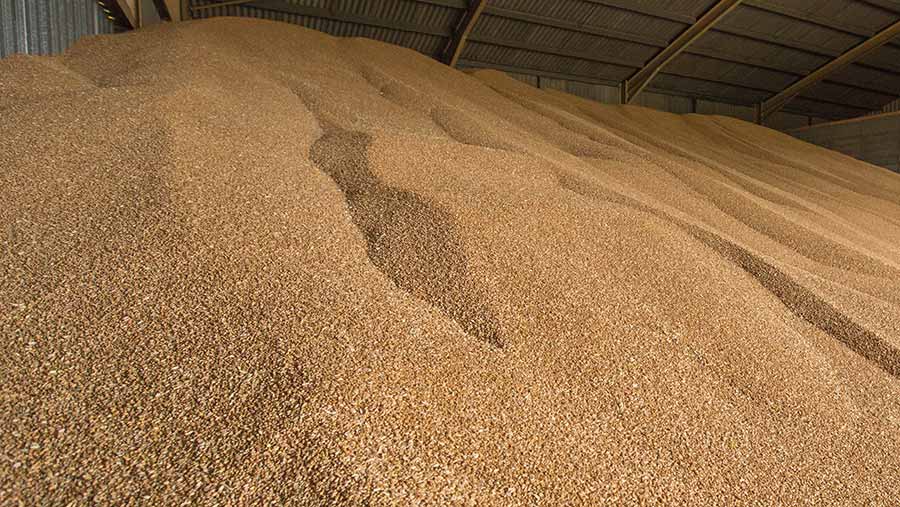Large volumes of cereals still on farm from last year’s harvest
 © Tim Scrivener
© Tim Scrivener UK cereals markets could face pressure this summer, with a large carryover of old-crop stocks expected into the next crop year and reduced animal feed demand.
Arable farms in England and Wales were storing 17% more wheat and 26% more barley on farm during the first quarter of 2023 than the previous year.
And the latest Defra cereal stocks survey show farmers had 4.5m tonnes of wheat and almost 1m tonnes of barley left in grain stores in February.
See also: Grain markets jittery as China cancels maize orders
With high supply, the volume of bought-in grains for use on farm is much lower, with wheat down 75% compared with last year’s levels.
Estimated home-grown wheat stocks held by merchants, ports and co-ops, were down 5% on the year to total 1m tonnes, and barley stocks were up 22% to total 885,000t.
Looking at demand, cereals use by millers, brewers and distillers is up, but animal feed demand is still notably down, according to the AHDB’s latest cereals data.
In March, 482,600t of domestic wheat was used by flour millers – 6.3% more than the same month last year.
Total wheat use in animal feed in March was down 9% at 310,000t and, looking at the first nine months of the 2022-23 crop year, wheat use is down 6.19%.
Barley use in animal feed is 14% lower for the crop year so far.
Feed production
Much of the decline in animal feed use relates to pig and poultry feed, but cattle and sheep feed production was also lower.
AHDB lead analyst Millie Askew said the poultry industry continued to struggle with higher energy costs and inflationary pressure throughout the supply chain.
She said it was unlikely there would be any substantial recovery in poultry feed use until at least midway through next season.
“With a large surplus of wheat in the UK this season, if animal feed production declines further than already forecast for the rest of the season, we could see an even larger surplus,” she added.
